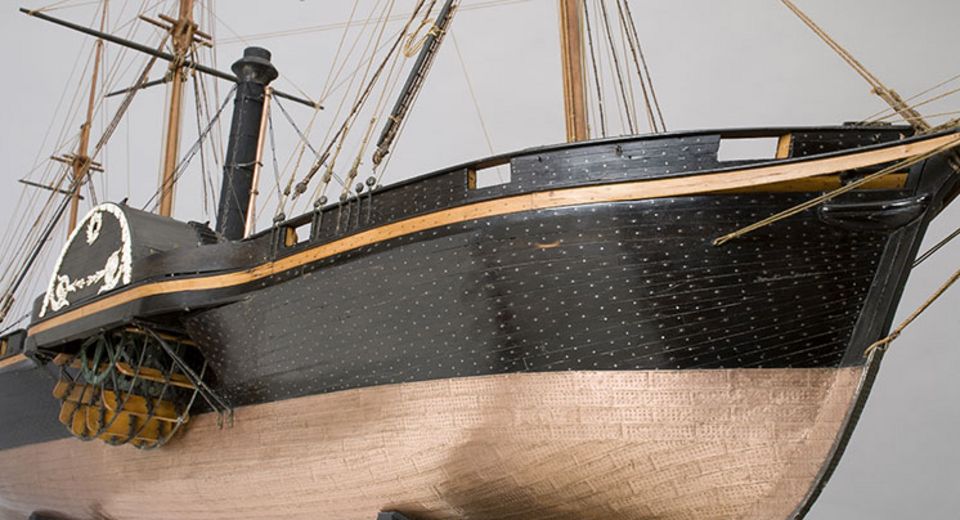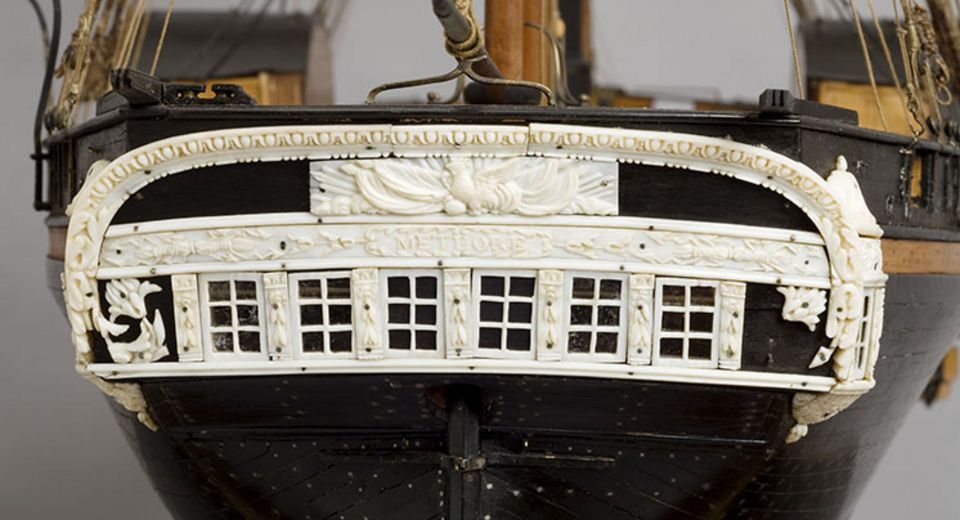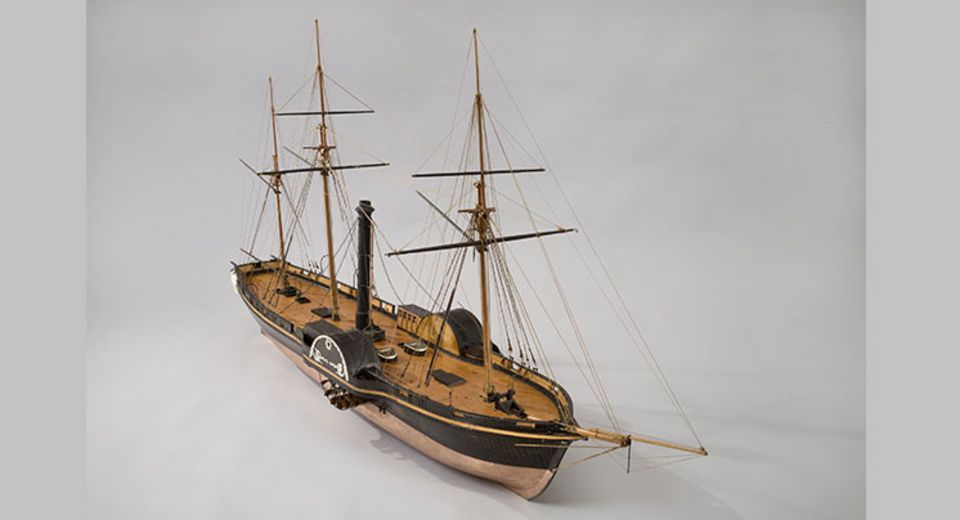The model of Le Météore
Rochefort - Hôtel de Cheusses/Arsenal
Le Météore was built in 1833 and marked the beginnings of steam propulsion in France. Its model is a reminder of the changes that took place in the Navy in the 19th century and the major role played by Rochefort’s shipyard in these technological advances.
Rochefort and the first steamships
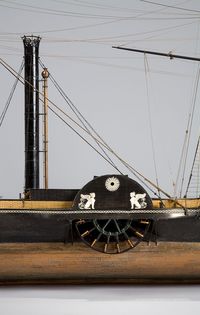 Enlarge image : Sphinx
Enlarge image : Sphinx
Although the French Navy started building steamships in 1818, intended for inland navigation, the early boats and their engines performed poorly. It took a few years before the first truly operational steamship was designed in Rochefort’s shipyard.
Assigned to Rochefort’s Shipbuilding Department, the engineer Jean-Baptiste Hubert (1781-1845) set to work designing Le Sphinx in 1827, marking the beginnings of steam power in the French Navy. Inspired by the hull of a corvette, and consequently suitable for seafaring, the ship was provided with a steam engine manufactured in Liverpool, so taking advantage of England’s technological advances. Due to its success, a score of ships were built, essentially along the same lines, including Le Météore.
Le Météore
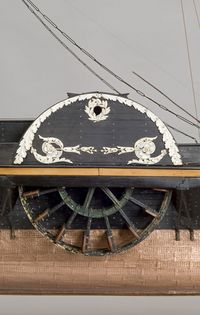 Enlarge image : Météore
Enlarge image : Météore
Launched in Rochefort in 1833 after 10 months of construction, Le Météore was a paddle-wheel aviso. Avisos (or advice boats) were small liaison vessels, originally designed to carry “advice”, i.e. dispatches, whence their name. Like most warships built up to the 1870s, Le Météore was a hybrid: It was equipped with a steam engine but was also provided with rigging. Over the course of its career, it carried out a number of successful missions. In 1838, it became the first French steamship to cross the Atlantic.
A model at the service of innovation and education
Created circa 1833 and probably intended for Rochefort’s Naval Museum, the model of Le Météore illustrates the beginnings of steam propulsion. It also testifies to the major role played by Rochefort’s shipyard in the French Navy’s technological evolution, as well as providing an educational overview of the architecture of such ships. While it is complete on the starboard side, whose lower part is lined with copper, the port side, presented without its lining, has an opening in the hull showing the assembly of its wooden components. Removable panels on the upper deck enable visitors to observe the layout inside the hold.
Collection highlight
The essential works to see during your visit to the Musée national de la Marine in Brest, Port-Louis, Rochefort, Toulon, and soon in Paris.

